Any animal requires a safe environment to live in. Whether you have one cow or an entire herd of cattle, good cattle panels keep them out of trouble. As an animal owner, you want to protect your investment. But before investing in cattle panels fencing system, check out these 9 essential elements to make the most informed decision.
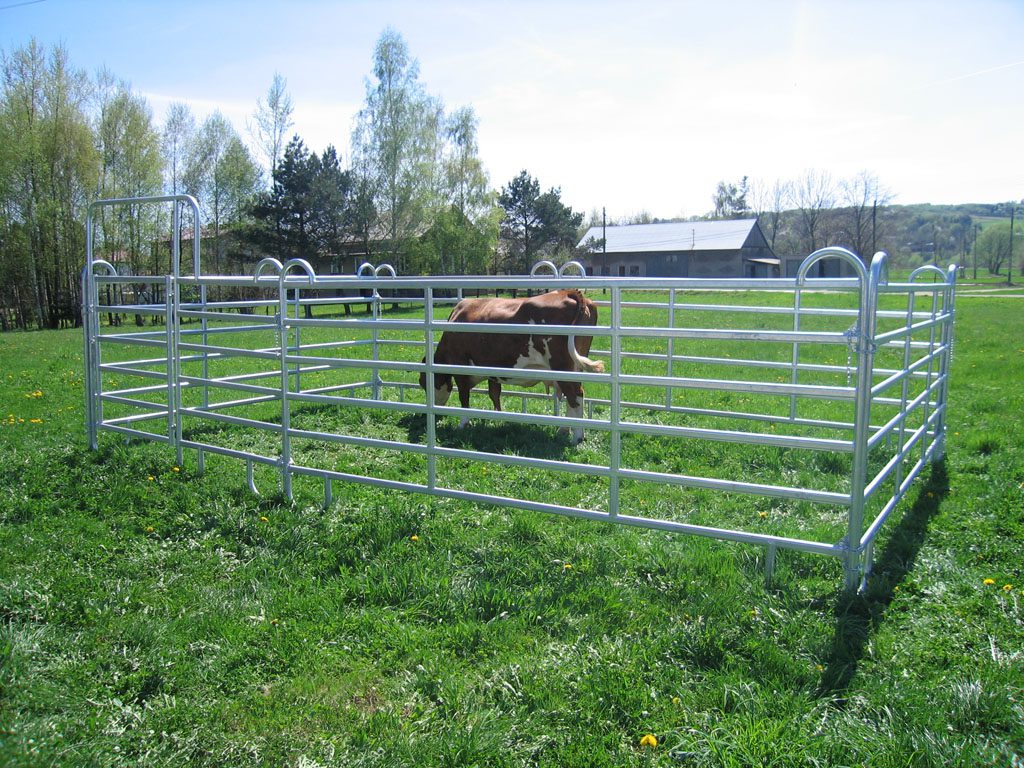
- Cattle Panels Material
The first thing to consider when buying cattle panel fencing is the material. Animals get to “know” a cattle panel through sight and “pain memory.” If it’s a powerfully built cattle panel, they will avoid it. That’s why strong, tall, visible cattle panels are essential for receiving corrals and feedlots. Animals will challenge a cattle panel if they’re temperamental or spooked, and newly-weaned calves that try to get back to their mothers might test a cattle panel, too. Therefore, the key to a good cattle panel is to build it properly out of sturdy material.
Wood was the traditional choice for cattle panel fencing, often cut and milled right off the farm. But for early cattle panel builders, the heartwood of aged, hardwood trees was readily available, and this heartwood had longevity—often lasting 100 years with little attention. Today, this type of wood is, unfortunately, generally unavailable. The wood at lumberyards is a typically softer wood that requires diligent upkeep.
In humid climates, a wooden fence has a life expectancy of about 20 years, provided a regular maintenance schedule that includes painting or staining every few years. Without dedicated maintenance, a wooden fence will suffer. Pressure-treated lumber will last for about seven years without painting or staining, but it has a higher cost than untreated lumber. That’s why wood is rarely used today for perimeter cattle panels of large pastures. Its durability makes it only suitable for small fields. That’s why agriculturists had to look for alternative materials such as steel.
- Steel Cattle Panels
If you want good cattle panels, you should build them properly out of sturdy material that will not be susceptible to the weather. Therefore, the best material for cattle panels is steel. Traditionally an alloy of iron and carbon, steel stands as one of the most commonly used metals globally. It’s used across industries from construction to blacksmithing to sewing and especially agriculture.
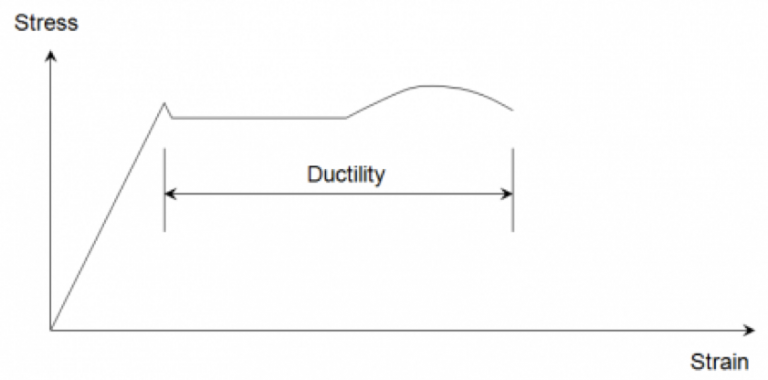
Iron has a little more hardness than copper. The addition of carbon strengthens the steel and makes it more durable until a specific concentration is reached, at which point it becomes brittle. Rather than other metal materials, steels have many outstanding characteristics:
– High hardness, good tensile strength thanks to iron.
– Tougher and more durable, giving less strain for the same stress because of the additional carbon.
– Good ductility.
– Low wear rate and good corrosion resistance.
– Steel can be used for larger spans with less depth.
– Easy to work with, easy to recycle.
The steel used in agriculture falls into three types: carbon-manganese steel; high-strength, low-alloy (HSLA) steel; and high-strength quenched and tempered alloy steel. Nowadays, in cattle panel fencing projects, we can easily find that the most common material is pre-galvanized zinc coated steel pipe, which is rust-resistant, capable of resisting the outdoor environment.
- Surface Treatment
Steel is naturally rustable. Hence, the steel’s surface should be treated with chromate and a zinc layer. The thicker the layers, the more cattle panels will be resistant to corrosion. The thicker layers also protect the inner steel layers in the long term. The surface treatment also adds shine to your steel cattle panels and makes them more visible. Thus, it makes it easier for your cattle to identify and beware of them.
Galvanising protects the underlying iron or steel in these fundamental ways:
– The zinc coating, when intact, prevents corrosive substances from reaching the underlying layer of steel or iron.
– Zinc serves as a sacrificial anode so that even if the coating is scratched, the remaining zinc will still protect the exposed steel.
– Zinc protects iron by corroding first. For better results, the application of chromates over zinc is considered an industrial trend.
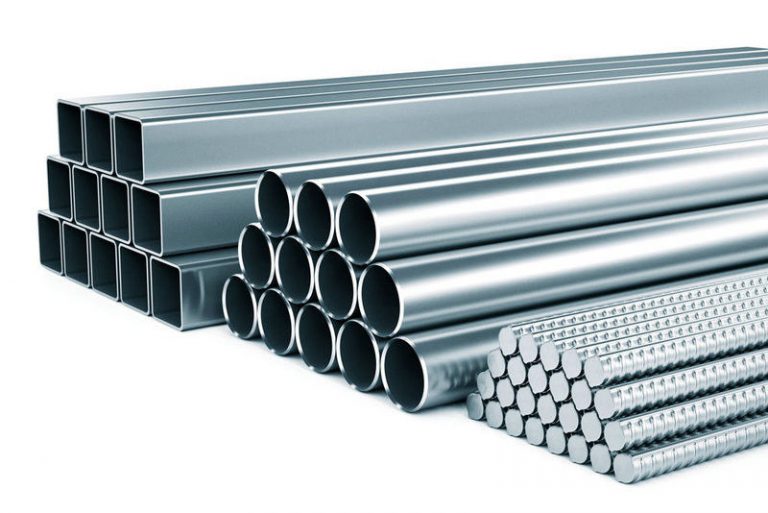
alvanized steel tubes”Hot-dip galvanizing adds a thick, robust layer of zinc-iron alloy on the steel surface of an item. In automobile bodies, where additional decorative coatings of paint are applied, electro galvanizing applies a thinner form of galvanizing.
The hot-dip process generally does not reduce strength on a measurable scale, except for high-strength steels (1100 MPa), where hydrogen embrittlement can become a problem. This deficiency is a consideration affecting the manufacture of wire rope and other highly-stressed products.
The hot-dip galvanizing does not provide sufficient protection for products constantly exposed to corrosive materials such as acids, including acid rain in outdoor uses. For these applications, more expensive stainless steel is optimal. Some nails made today are galvanized. Nonetheless, electroplating is used on its own for many outdoor applications because it is cheaper than hot-dip zinc coating and looks good when new.
Another reason not to use hot-dip zinc coating is that for bolts and nuts of size M10 (US 3/8″) or smaller, the thick hot-dipped coating fills in too much of the threads, reducing strength (because the dimension of the steel before coating must be reduced for the fasteners to fit together). Therefore, for cars, bicycles, and many other light mechanical products, the practical alternative to electroplating bolts and nuts is not hot-dip zinc coating but making the fasteners from stainless steel.
The crystallite size in galvanized coatings is a visible and aesthetic feature is known as “spangle.” By varying the number of particles added for heterogeneous nucleation and the rate of cooling in a hot-dip process, the spangle can be adjusted from a uniform surface (crystallites too small to see with the naked eye) to grains several centimeters wide. Visible crystallites are rare in other engineering materials, even though they are usually present.
Thermal diffusion galvanizing, or Sherardizing, provides a zinc diffusion coating on iron- or copper-based materials. Parts and zinc powder are tumbled in a sealed rotating drum. At around 300 °C (572 °F), zinc will diffuse into the substrate to form a zinc alloy.
Shot blasting carries out the advanced surface preparation of the goods. The process is also known as “dry galvanizing” because no liquids are involved; this can avoid possible problems caused by hydrogen embrittlement. The dull-grey crystal structure of the zinc diffusion coating has good adhesion to paint, powder coatings, or rubber. It is a preferred method for coating small, complex-shaped metals and for smoothing rough surfaces on items formed with sintered metal.
II. Cattle panel frames
The frame will naturally depend on your animal size. For instance, cattle panels for horses require the tallest frames. For cows and bulls it can be slightly shorter. Then hog panels should be shorter than cow panels, and the shortest ones are those for sheep and goats. Please be noted that most sheep and goat panels will stop the cattle. The reverse is not always true.
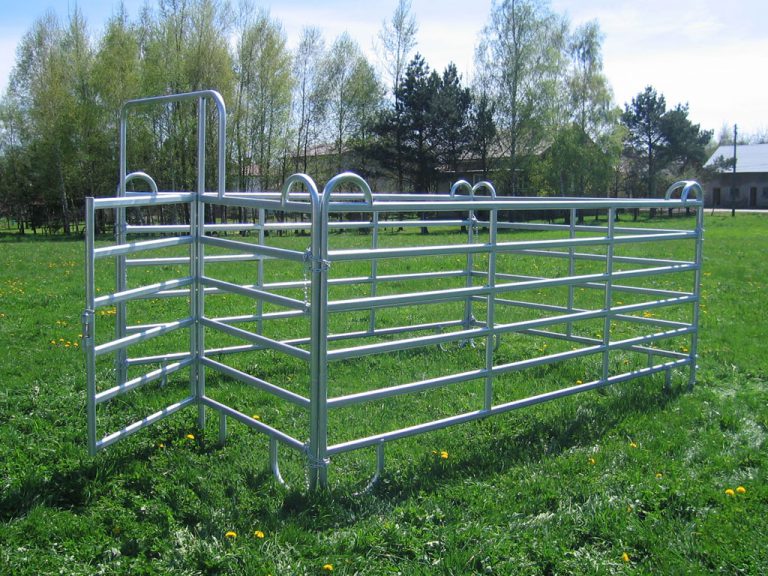
Height & Width
The frame width should be long enough to minimize the installation process but short enough to be easily handled. Cattle panels for the small ones require closer vertical bar spaces than those for huge ones.
III. Cattle Panel Rails
About the structure of the cattle panels, you wouldn’t want to have the rails spaced too far apart because then the cattle could maybe go underneath or through it. Hence, cattle panels for adult males require closer rail spacing.
- Rail Quantity
The standard rail quantity for cattle fences is about 5 to 6. Cattle panels for mixed sizes (ewes with lambs, cows with calves, etc.) may need more rails than uniform animal groups.
Without a doubt, goats are clever and creative escape artists. Therefore, it’s wise to have a higher density of rails for goat panels, too. Even though cattle panels are short due to their low height, the ideal rail quantity is still the same.
- Rail Arrangement

The cattle panels need closer rail spacing below. The reason is that in the low height, they tend to be stronger and easier to attack and escape from the cattle panels.
These kinds of panels are also suitable for a mixed-sized cattle farm. They are effective for both bigger and smaller animals.
V. Cattle Panels Pipes
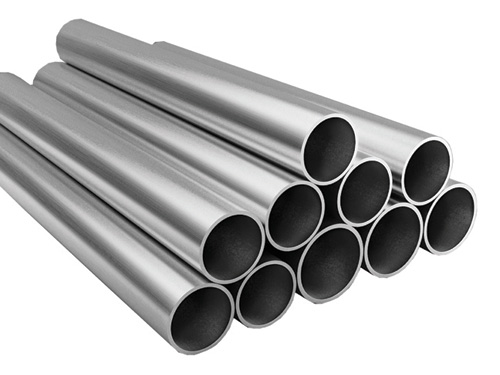
Steel pipes are long, hollow tubes used for a variety of purposes. There are two distinct production methods, which result in either a welded or seamless pipe. In both methods, raw steel is first cast into a more workable starting form. It is then turned into a pipe by stretching the steel out into a seamless tube or forcing the edges together and sealing them with a weld.
The first methods for producing steel pipe were introduced in the early 1800s, and they have steadily evolved into the modern processes we use today. Millions of tons of steel pipes are produced every year. Their versatility makes them the most often used product.
You can find steel pipes in a variety of places. Since they are strong, they are used underground for water and gas transportation. They are also employed in construction to protect electrical wires. While steel pipes are strong, they can also be lightweight, making them perfect for cattle panel fencing.
- Types of pipes
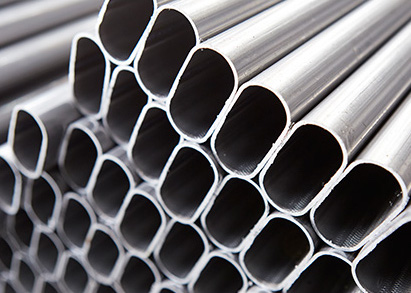
There are three common types of pipes for cattle panels: round pipes, oval pipes, square and rectangular pipes. Round and Oval steel is typically used for horizontal rails because they don’t have a sharp corner and can contain high tenderness.
On the other hand, Square and Rectangular Steel Pipes are not recommended for horizontal rails because these types can cause injuries to your cattle when they attack the panels. Therefore, they are normally used for vertical posts because they are easier for construction.
- Choosing the pipe size
Again, depending on the size of the cattle, the pipe sizes vary from 40×40, 50×50, 60×60, 75×75, 90×90, 100×100, 115×42, 97×42, 75×40, 59x30mm. Round pipes should be around OD 26 – 27mm.
Sizes make the visibility for the cattle panels. Visibility is the most crucial consideration when selecting fencing for animals such as horses, deer, and antelope that move at high speed and have a restricted color perception (compared to humans). They need to see the cattle panels so they don’t run into them and become entangled. Wide-rails are ideal for sightlines, lightweight and easy to install, and equally effective. This type of cattle panel is more portable in the long run, as well.
- Pipe Thickness
Thickness from 0.8mm to 3.2mm is ideal for panel pipes. The stronger the cattle are, the thicker cattle panel pipes should be.
V. Cattle Panels Welded Parts
If you own a farm, you should learn how to keep your animals from breaching the cattle panel line, which can occur when the animals are hungry, weaning, breeding, or are simply bored.
– Hunger: Starved animals will eventually challenge most fences.
– Weaning: Strong physical barriers are needed to cope with separation.
– Breeding: Libido induces all creatures to challenge rules (and fences).
– Boredom: Animals in corrals, stalls, and lots crave any “entertainment.”
– Gateways and handling yards: Animals often push each other into fences when being moved around.
– Fear and fright: Predators or loud noises can make the “preyed” animals (e.g., horses, goats, turkeys) run in terror straight into, under, over, or through any fence, no matter what fence design (netting, hi-tensile, or woven wire).
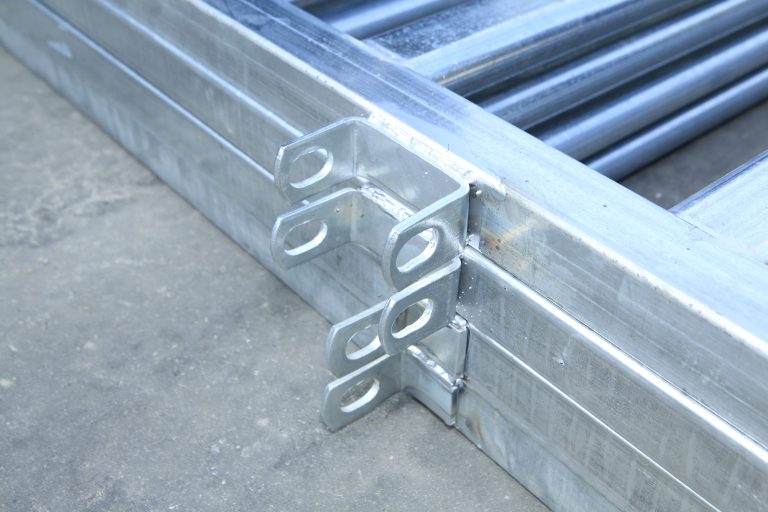
For the potential hazards above, welded parts are an irreplaceable component of any cattle panel. Their purpose is to connect the panels, turning them into a closed fence. Stronger welded parts make more robust cattle panels. Welded parts should be solid enough to withstand the animal force. If these parts aren’t tight even in one of the panels, the cattle can easily break them and escape.
These are some popular types of welded parts: U lug and L lugs, caps, panel base.
U-lugs form a U-shape, which has one more foot than L-lugs. These lugs ought to be firmly welded to the panels to ensure their connection.
Usually, along with the lugs, pins are used to link the panels. The best material for pins is stainless steel. Stainless steel pins never wear out and will last a lifetime. These are perfect for use in wet weather.
VI. Cattle Panel Paint
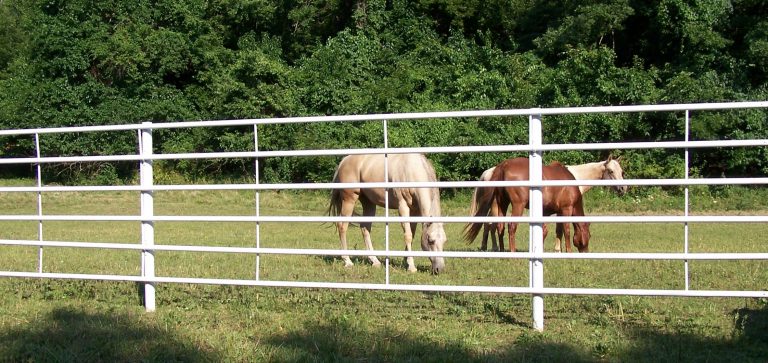
Depending on the product mix, square feet per ton, and steel surface condition, galvanizing is often less expensive than galvanizing on an initial cost basis. However, as with any purchase, the lifetime costs should be considered when choosing which corrosion prevention system to utilize.
With galvanizing, the life-cycle cost, i.e., the cost per year to maintain, is almost always less than a paint system. Paint systems require maintenance, partial repainting, and completely repainting several times over 30-year project life. The costs can be staggering, deciding to paint a costly one in the long run.
However, zinc and paint combined (synergistic effect) produce corrosion protection of approximately 2X the sum of the corrosion protection that each alone would provide. Additionally, duplex coatings make repainting easy, ensure excellent safety marking systems, and good color-coding. Painting over galvanized steel that has been in service for many years also extends the life of the zinc coating.
VII. Must-Have Features
- Durability
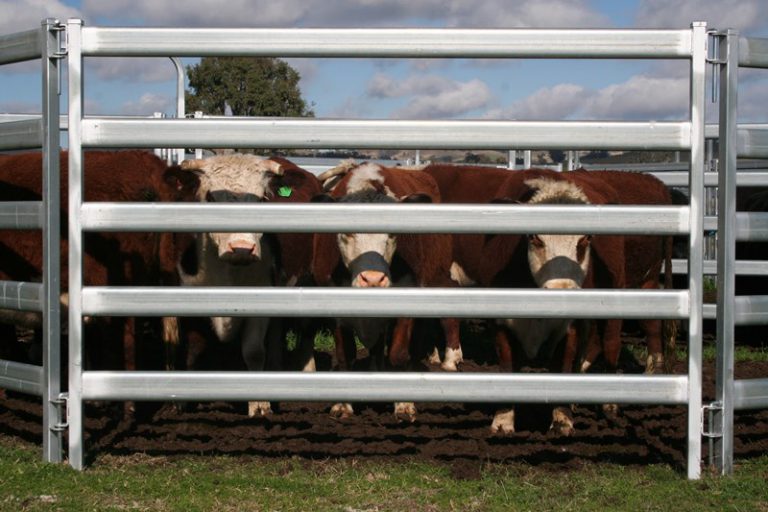
Of course, it is the durability of cattle panels that differentiates the good products from the bad. Don’t sacrifice quality or durability to save money. Good cattle panels made from suitable material using modern technology last longer and will save your budget in the long term because you won’t need to maintain or replace them regularly. Since cattle panels can cost higher on average, so you should consider which type you will purchase. The higher the quality of products, the pricier they will be.
However, it’s important to mention that some suppliers will charge you more, but you don’t necessarily get better quality. You should carefully inquire the supplier about the information on the material as well as the technology used. You can even check their quality certification. If their steel pipes follow JIS G standard, ASTM Standard, or AS/NZS Standard, … you can be pretty assured about the quality of this product. Moreover, the quality management systems should be certificated in ISO International Standard.
- Pressure Treatment
Strong cattle panels are better equipped for the outdoor environment and will generally last you longer. However, in harsher environments with hotter climates such as Africa, Asia or colder climates such as England, Russia or Australia, you should thoroughly choose the appropriate material to handle the potential weather hazards. We highly recommend choosing thick stainless steel pipes in big sizes, which can resist high pressure.
Cattle panels should also be resistant to high-temperature corrosion. The term “high-temperature corrosion” is not very accurate. It generally concerns “dry” corrosion, usually by gases, and what is high for one material may be low for another. However, in stainless steel, it can often be taken to mean 500 deg C and higher.
Under these conditions, the surface alteration produced on stainless steel is usually relatively uniform. When you expose the material to an oxidizing atmosphere at high temperatures, an oxide layer usually forms on the surface.
This layer will slow down any further oxidation. If the temperature of the material increases, the oxide growth rate will increase, and the layer will finally crack and spall off when the scaling temperature is reached, thus losing its protective effect. Chromium-alloyed steel has better resistance to oxidation than carbon steels due to chromium and iron oxides in an oxide layer.
Practically, various types of stainless steel are used across the whole temperature range from ambient to 1100 deg C. The choice of grade depends on several factors:
– Maximum temperature of operation
– Time at temperature, cyclic nature of the process
– Type of atmosphere, oxidizing, reducing, sulphidizing, carburizing.
– Strength requirement
- Rustproofing
Iron and steel rust when they come into contact with water and oxygen. They rust faster in salty water or acid rain. On the other hand, Chrome does not rust easily because a layer of chromatic oxide protects its surface.
Iron and steel rust when they come into contact with water and oxygen. Both water and oxygen worsen rusting. Rusting is an oxidation reaction. The iron in steel reacts with water and oxygen to form hydrated iron(III) oxide, which we see as rust. The word equation for this reaction is Iron + water + oxygen → hydrated iron(III) oxide.
Salt dissolved in water does not cause rusting, but it does speed it up, as does acid rain. Regular rain initially contains salt and acid. Therefore, in places where it rains regularly, you should require the manufacturer to thicken the zinc-coated or chromatic layer to protect the inner.
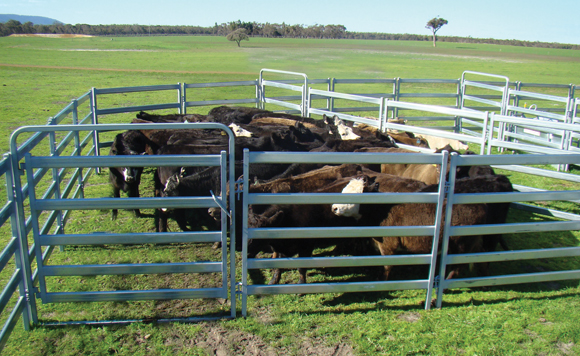
Galvanized zinc coating will make the cattle panels more resistant to rust. Rusted steel weakens the structural integrity of the panels, increasing the risk of your cattle breaking free. Although galvanizing will mitigate the damage of the underlying steel, rusting will inevitably occur after long years of weather exposure, especially under acidic conditions.
For example, corrugated iron sheet roofing will start to degrade within a few years despite zinc coating’s protective qualities. Marine and salty environments also lower the lifetime of galvanized iron because the high electrical conductivity of seawater increases the rate of corrosion, primarily through converting the solid zinc to soluble zinc chloride, which simply washes away. Galvanized car frames exemplify this; they corrode much faster in cold environments due to road salt, though they will last longer than unprotected steel.
Galvanized steel can last for many decades if other supplementary measures are maintained, such as paint coatings and additional sacrificial anodes. The rate of corrosion in non-salty environments is caused mainly by levels of sulfur dioxide in the air. In the most benign natural environments, such as inland low population areas, galvanized steel can last without rust for over 100 years.
Typically, galvanized piping rusts from the inside out, building up layers of plaque inside the piping, causing water pressure problems and eventual pipe failure. These plaques can flake off, leading to visible impurities in water and a slightly metallic taste. The life expectancy of galvanized piping is about 70 years. Still, it may vary by region due to contaminants in the water supply and the proximity of electrical grids, where piping acts as a pathway (the flow of electricity can accelerate chemical corrosion). Additionally, Pipe longevity depends on the thickness of zinc in the original galvanizing, which ranges on a scale from G40 to G2.
It also depends on whether the pipe was galvanized on both the inside and outside, or just the outside.
Galvanized steel pipes used in outdoor applications require steel’s superior mechanical strength. Thus, the use of galvanized pipes lends some truth to the urban myth that water “purity” in outdoor water faucets is lower, but the actual impurities (iron, zinc, calcium) are harmless.
- Easy Assemblage
Normally, cattle panels are easy to assemble, and any farm-owner could do the set-up. However, the accessories such as pins still require skills for quicker work. Therefore, the best cattle fence should include familiar accessories.
VIII. Cattle Panels: Packing and Transportation
Cattle Panels should be packed and labeled according to distance and transportation. One should take great care to avoid any damage during storage or transport. In addition, clear labels are tagged on the outside of the packages to help easier identify the product I. D. and quality information.
The supplier must provide standard seaworthy packaging. Usually, the tubes are packed in bundles, wrapped in a plastic bag, fixed by a steel strip, and then placed in the container with steel wire fixing. All these packing details ensure your goods are delivered to you safely.
Every part of the cattle panel needs different packing:
– Packing of Cattle panels: plastic film and wooden or metal pallet.
– Packing of Cattle panels’ pins: Every 50 pieces should be packed in a double layers strength woven bag.
– Packing of Cattle panels’ other accessories: small plastic bag.
Metal pallets are cost-effective and safe for many reasons. First, you don’t have to replace them. Second, since metal is virtually unbreakable, our galvanized metal finishing lowers the risk of chemical contamination when used with hazardous waste material. Third, plastic film is also needed to protect the cattle panels from wear and tear.
IX. Choosing a trusted cattle panel supplier
Last but not least, choosing a reputable supplier with a strong customer base can ensure the cattle panels’ quality. Other than reputation, these are some factors that differentiate the best cattle panel supplier from average.
- Production capacity
The production capacity of the manufacturer determines how long it takes you to receive your cattle panels. The higher the production capacity is, the shorter time you have to wait. It depends on the factory size and the technology they applied. In general, big manufacturers have a higher production capacity.
If you own a large farm with a herd of more than 100 cows, it’s essential to find a steel manufacturer with a production capacity of around 500MTS of pipes per day; 4500pcs cattle panel per month.

- Production process
The best suppliers control their entire production process: from processing raw materials to packing the final product. Thus, the manufacturer can completely control the quality of the cattle panels. If they are not steelmakers and resort to buying pipes from another supplier, they cannot be sure about the exact material and production process. What happens if your cattle panels become rusty after three months of usage, and when you contact your supplier, they shift the blame onto the steelmakers. Moreover, it results in higher prices because the products’ prices include more transportation costs and benefits.
- Technology
Each production stage should use separated and up-to-date production techniques. Modern machinery and advanced technology will save energy and reduce production costs. There are global standards for the quality management system and product quality such as ISO, Standards Australia, ASTM, JIS G, … Make sure you ask the supplier about their quality certification before ordering anything.

- Professional Consultation
Professional consultation is essential when you are barely familiar with cattle panels and steel in general. The professional suppliers will guide you through the right material based on your location and weather conditions, which type of steel pipes to choose from, help you customize the height and width of the frame suitable for your cattle. They had better provide free consultancy services with 24/7 availability if they want to stand out from the competition.
- Cattle Panels Supplier: Professional staff
If you are looking for a foreign supplier, they need to have experience exporting activities. It’s in your best interest to work with a knowledgeable and dynamic team, which will help streamline the process and deliver you the best results.
Cattle Panels Supplier: Delivery
The delivery time for cattle panels is about 30 – 60 days depending on the distance between you and the supplier.
Cattle Panels Supplier: After-sales service
After buying cattle panels, you still need assistance with set-up and maintenance. You would be in trouble if your supplier disappeared right after your purchase without any guarantee of the quality of the product.
Chinh Dai Steel’s Cattle Panels
Chinh Dai Steel is a professional supplier specializing in producing cattle panels for Cows, Bulls, Lambs, Goats, Horses, Sheep, etc. Our products are well-known in many international markets such as Australia, India. Myanmar, Indonesia, Laos, etc.
Specification
Material: Pre-galvanized zinc-coated steel pipe.
Pipe Style: Round pipes, Oval pipes, square pipes, rectangular pipes
Pipe size (mm): 40×40, 50×50, 60×60, 75×75, 90×90, 100×100, 115×42, 97×42, 75×40, 59×30 …
Thickness: 0.8mm to 3.2mm
Colour: Basic Zinc; Paint: Silver, White, Black.
Feature: Easily Assembled, Eco-friendly, Pressure Treated Timbers, Rodent Proof, Rot Proof, Tempered Glass, Waterproofing, etc.
Quality
Quality management system: ISO 9001:2008 International Standard.
Product quality: JIS G standard, ASTM International Standard, AS/NZS International Standard.
Technology: In seven technology steps, we apply modern machinery and advanced technology to save energy and reduce production costs.
Production process: closed from raw material to final product. Each production stage uses a separate and modern production line.
Production capacity: 500MTS of pipe per day; 4500pcs Cattle Panel per month.
Durability
Product lifetime: more than 20 years.
Surface Treatment: chromate layer. The products are guaranteed to have a beautiful shine and gorgeous patterns. The zinc and chromate layer is thick and resistant to corrosion. It also helps to protect the inner layer for a more extended period.
Service
Payment: Letter of Credit, T/T.
Packing: Steel pallet for Cattle Panel.
Delivery time: 30 – 60 days after receiving the deposit (depends on distance).
Communication: 24/7 hotline, 24/7
